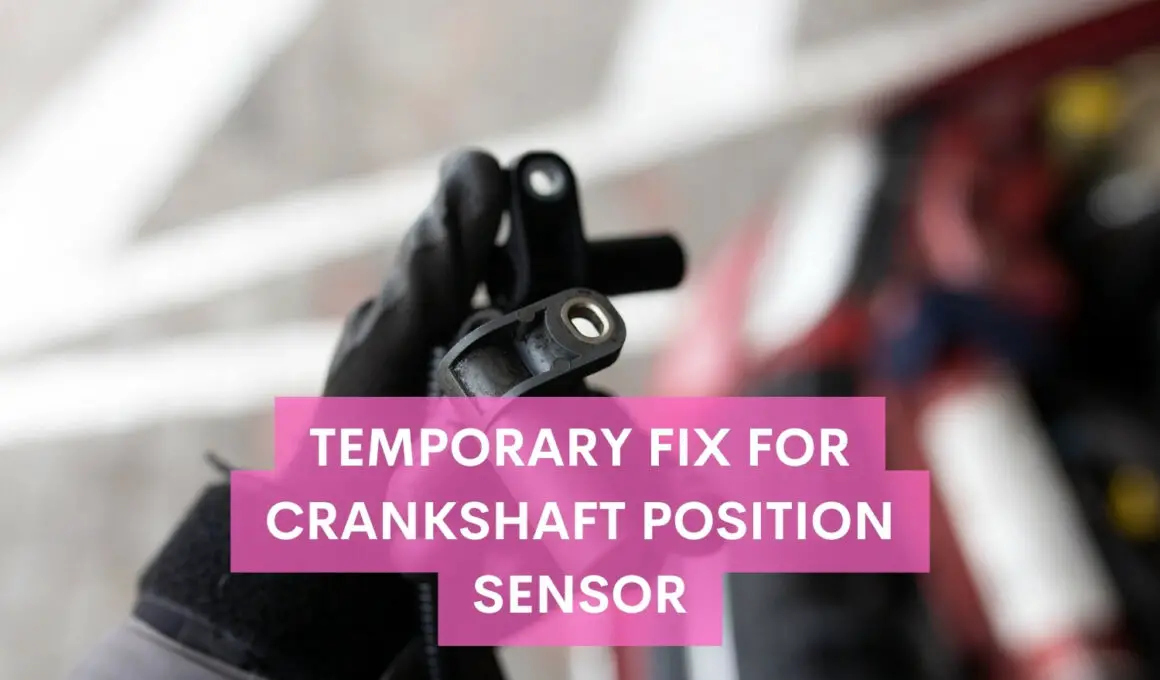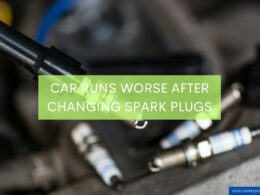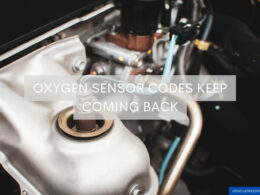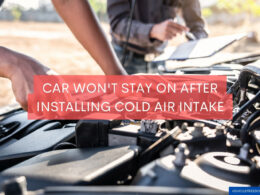In This Article Show
If you’re noticing odd behavior from your vehicle, such as unexpected stalling or rough idling, it might be linked to a little component known as the crankshaft position sensor. Understanding and addressing this can seem daunting, but fear not.
With over 13 years as a mechanic, I’ve dealt with my fair share of crankshaft position sensor issues. My experience in the field has taught me that while these sensors are small, their impact on vehicle performance is massive.
But this isn’t just about mechanics. I believe in empowering vehicle owners with knowledge. That’s why, in addition to working under car hoods, I pen down my experiences and insights here on the blog.
Today, I’ll walk you through a temporary fix for a malfunctioning crankshaft position sensor. The goal? To get you back on the road safely while you figure out a more permanent solution. Let’s go.
What is a Crankshaft Position Sensor (CPS)?
The heart of any vehicle is its engine, and for the engine to function optimally, it needs to know exactly when to spark and when to inject fuel. Enter the Crankshaft Position Sensor, commonly referred to as the CPS.
This small component plays a pivotal role in ensuring your engine runs smoothly.
Definition and Main Function
At its core, the CPS is an electronic device used primarily in engines to monitor the position or rotational speed of the crankshaft. Think of it as the eyes of the engine management system.
This information is crucial because it helps the engine control module (ECM) determine the exact fuel injection and ignition timing.
How it Affects the Performance of a Vehicle
If you’ve ever experienced your car hesitating when you step on the gas or jerking unexpectedly, a faulty CPS might be the culprit. When the CPS isn’t functioning correctly, the engine can misfire, stall, or even refuse to start.
In simpler terms, without a properly working CPS, your engine is essentially running blind, making guesses about when to fire and when to fuel.
Symptoms of a Malfunctioning CPS
I’ve seen the following common symptoms indicating a potentially faulty CPS:
- Intermittent Stalling: The vehicle might stall without any warning, especially at low speeds.
- Difficulty Starting: The car may not start immediately or might require several attempts.
- Reduced Gas Mileage: A misfiring engine can consume more fuel.
- Engine Vibrations or Juddering: Particularly noticeable when the vehicle is at idle.
- Check Engine Light: Often, the check engine light will illuminate on the dashboard.
Recognizing these symptoms early can be the difference between a minor temporary fix and a significant repair bill.
In summary, the CPS is more than just a sensor; it’s integral to your vehicle’s performance and efficiency. Ensuring its proper function is paramount to your engine’s health and your safety on the road.
Temporary Fixes for a Malfunctioning CPS
Alright, now that we’re familiar with what a CPS is and why it’s so essential, let’s explore some temporary fixes you can employ if you suspect yours is acting up.
But before we delve in, an important reminder: these are short-term solutions. While they can help you in a pinch, it’s vital to address the root cause and seek a permanent solution as soon as you can.
1. Visual Inspection
Purpose: Often, issues arise simply because of wear and tear, disconnections, or visible damage.
Steps
- Turn off the engine and ensure the car is in a safe state before you inspect.
- Locate the CPS. It’s typically found near the crankshaft, usually on the front side of the engine (but its position can vary based on your vehicle model).
- Check for any visible damage like cracks, wear, or broken wires.
- Ensure the connection between the CPS and its wiring harness is secure. Loose connections can lead to intermittent problems.
2. Clean the Sensor
Purpose: Over time, the CPS can get covered in grime, oil, or other engine debris which might affect its operation.
Steps
- Disconnect the sensor. Before you do this, ensure you’ve turned off the engine and removed the key from the ignition.
- Using a clean cloth and an electronic cleaner spray, gently wipe away any visible dirt or grime from the sensor. Be careful not to scratch or damage it.
- Once clean, reconnect the sensor and ensure it’s firmly in place.
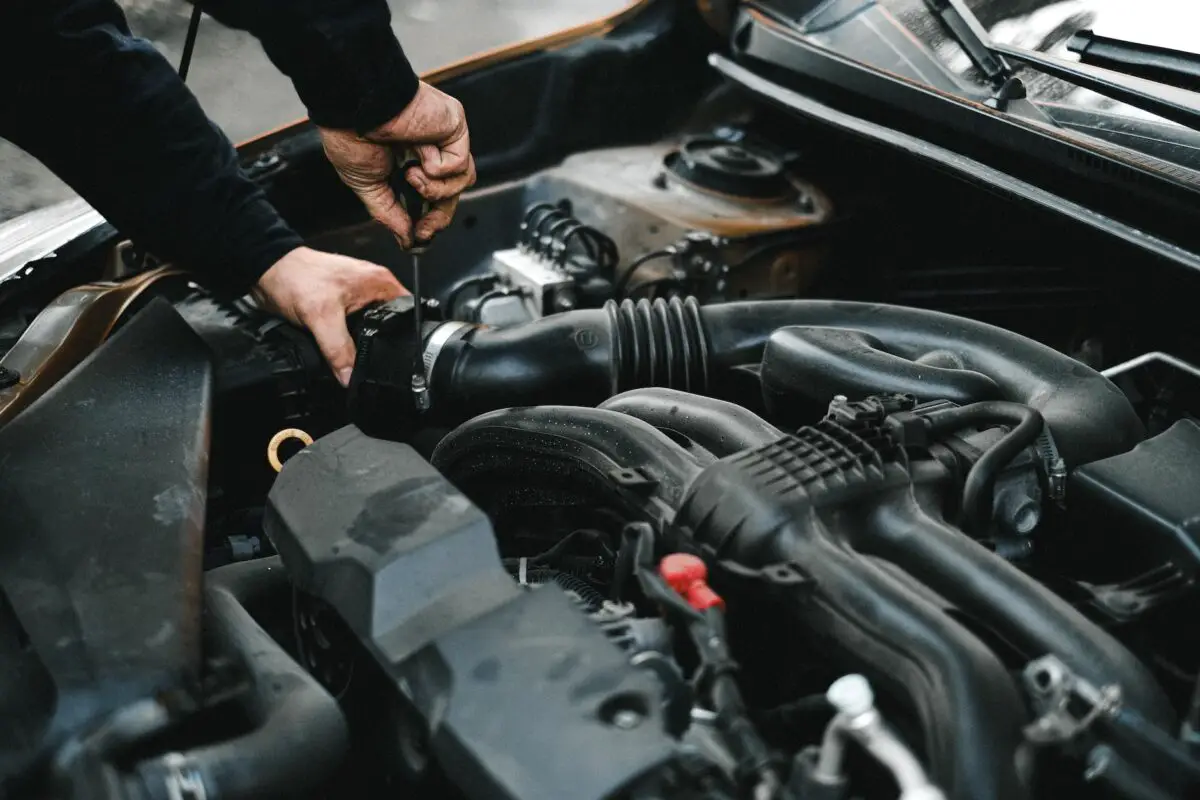
3. Reposition the Sensor
Purpose: Sometimes, the CPS might slightly move out of its optimal position due to engine vibrations or external impacts.
Steps
- After locating and disconnecting the CPS, check if it’s properly aligned with the crankshaft pulley.
- Adjust its position if necessary. The sensor and the pulley gap shouldn’t be too wide or too narrow. Refer to your vehicle’s service manual for the correct specifications.
- Reconnect the CPS once you’re done.
5. Bypass Techniques
Caution: This is a more advanced method and has its risks. Only attempt this if you’re comfortable with car electronics and after understanding the associated risks.
Purpose: In cases where a direct replacement isn’t immediately available, a bypass can act as a stop-gap measure.
Steps
- Identify the power and ground wires of the CPS.
- Using a jumper wire, connect these two wires. This effectively bypasses the sensor, allowing the engine to use default settings.
- Monitor the engine’s behavior. If it starts and runs better, it’s a clear indication of a faulty CPS.
5. Reset the Engine Control Module (ECM)
Purpose: Sometimes, merely resetting the ECM can clear minor electronic glitches or hiccups causing the CPS to malfunction.
Steps
- Locate the ECM, which is usually in the engine compartment or under the dashboard.
- Disconnect the battery for about 15 minutes. This will reset the ECM.
- Reconnect the battery and start the engine. Check if the symptoms persist.
While these temporary fixes might get your vehicle up and running, they’re not permanent solutions. Especially given the vital role the CPS plays in your engine’s operation, it’s essential to seek a professional mechanic’s expertise – like the insights I’ve gathered over my 13 years in the field – for a lasting fix.
Pro Tip 👋
Need to talk to a professional with a special discovery on your car issue? Use this link to talk to a professional. This is in partnership with JustAnswer, which has an on-call expert who can help you, especially during an emergency. Talk to a master mechanic now.
Potential Risks of Ignoring a Faulty CPS
Addressing the issues with a malfunctioning CPS isn’t just about ensuring smooth driving – it’s about prioritizing safety, vehicle longevity, and even financial well-being. Let’s explore the potential consequences of turning a blind eye to a problematic CPS:
1. Degraded Engine Performance
- Why it’s a concern: The engine relies on the CPS for accurate timing information. You might experience misfires, reduced power, or a rough idle without this.
- Long-term implications: Constantly running your engine under these conditions can lead to wear and tear, reducing its lifespan.

2. Safety Concerns
- Why it’s a concern: An engine can stall without warning, especially at low speeds or intersections. This unpredictability can be dangerous, placing you and other road users at risk.
- Long-term implications: Regular stalling can lead to accidents, especially in high-traffic areas or challenging driving conditions.
3. Economic Impact
- Why it’s a concern: Though it might seem like a minor issue, a malfunctioning CPS can lead to reduced fuel efficiency, making you visit the gas station more often.
- Long-term implications: Ignoring the issue now might save you a repair bill in the short term. However, as the problem persists, it can lead to more extensive engine damage, resulting in costly repairs down the line.
4. Stranding
- Why it’s a concern: One of the symptoms of a faulty CPS is the vehicle’s refusal to start. Imagine being stranded in an unfamiliar place, especially during nighttime or adverse weather conditions.
- Long-term implications: Regularly pushing your vehicle to start can damage other components, like the starter motor or the battery.
5. Environmental Concerns
- Why it’s a concern: Engines that misfire or run inefficiently can emit more pollutants than those operating correctly.
- Long-term implications: Not only is it harmful to the environment, but it can also lead to failing emission tests in places where they’re mandatory.
In essence, while the initial symptoms of a faulty CPS might seem trivial, the cascading effects of ignoring them can be far-reaching and damaging.
It’s not just about maintaining your vehicle; it’s about ensuring safety, reducing future costs, and being environmentally responsible. So, always address these issues head-on and promptly.
Permanent Solutions for a Faulty CPS
While temporary fixes can offer relief in a pinch, they’re just that – temporary. To ensure your vehicle’s longevity and its occupants’ safety, it’s crucial to seek permanent solutions for a malfunctioning CPS. Let’s explore the more definitive approaches to address this issue:
1. Professional Diagnostics
Why it’s important
Before jumping to conclusions, a professional diagnostic test can confirm whether the CPS is the root of your vehicle’s issues. Advanced diagnostic tools can read the signals from the CPS, ensuring you’re not fixing something that isn’t broken.
Steps
- Schedule an appointment with a reputable mechanic or auto service center.
- They’ll likely use an OBD-II scanner to read any fault codes related to the CPS.
- Based on the results, they’ll provide recommendations on the next steps.
Pro Tip 👋
Need to talk to a professional with a special discovery on your car issue? Use this link to talk to a professional. This is in partnership with JustAnswer, which has an on-call expert who can help you, especially during an emergency. Talk to a master mechanic now.
2. Replacement of the CPS
Why it’s important
The most straightforward solution is often replacing a faulty CPS. Modern sensors are designed to last, but like all parts, they’re subject to wear and tear. Replacing them ensures optimal engine performance and fuel efficiency.
Steps
- Acquire a quality replacement CPS, preferably one that matches the specifications of your vehicle’s make and model.
- While it’s possible for seasoned DIY enthusiasts to handle the replacement, considering the sensor’s pivotal role, it’s often best to let professionals handle it.
- After replacement, the mechanic will likely clear any fault codes and run diagnostics to ensure the new CPS functions correctly.
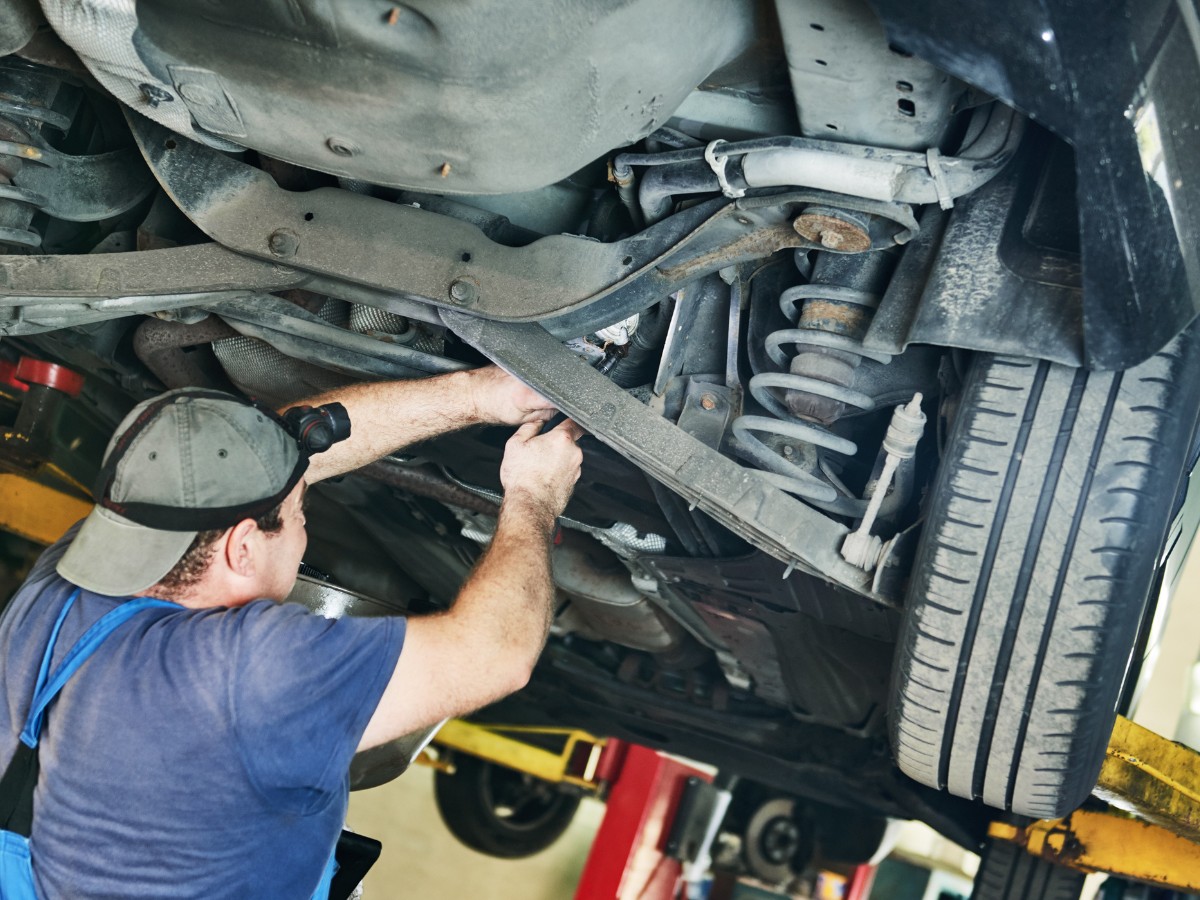
3. Regular Vehicle Maintenance
Why it’s important
Like many vehicle components, regular check-ups and maintenance can prevent issues from arising in the first place. Staying on top of your car’s health reduces the chances of unexpected breakdowns.
Steps
- Stick to the maintenance schedule recommended in your vehicle’s manual.
- During service appointments, ask mechanics to check on critical sensors, including the CPS.
- Address minor issues before they escalate, saving you both time and money in the long run.
In conclusion, while the intricacies of modern vehicles can be overwhelming, understanding the role and function of key components like the CPS is half the battle.
Addressing issues promptly and seeking permanent solutions will ensure your car serves you reliably for years to come. Remember, a well-maintained vehicle is a joy to drive and a testament to its owner’s responsibility and care.
Frequently Asked Questions about the Crankshaft Position Sensor (CPS)
How long does a Crankshaft Position Sensor typically last?
A CPS is designed to last for a long time, often the lifespan of the vehicle. However, on average, you can expect it to function optimally for around 60,000 to 100,000 miles. The lifespan can vary based on the vehicle’s make, model, and driving conditions.
Can I drive my car with a faulty CPS?
While it might be possible to drive with a malfunctioning CPS, it’s not advisable. A faulty CPS can lead to unpredictable engine behavior, including sudden stalling, which can be a safety hazard. It’s best to address the issue promptly.
How much does it cost to replace a Crankshaft Position Sensor?
The cost varies based on the make and model of your vehicle, as well as labor charges in your region. On average, you can expect to spend between $100 to $300, including parts and labor. It’s always a good idea to get quotes from multiple service centers for the best price.
Can a bad CPS affect fuel economy?
Yes, a malfunctioning CPS can lead to inefficient fuel combustion due to mistimed ignition and fuel injection. This can result in reduced miles per gallon, costing you more at the gas pump.
Will the check engine light always come on if the CPS is faulty?
While the check engine light often illuminates when there’s an issue with the CPS, it’s not always guaranteed. The light can be triggered by various engine or electronic issues. If you suspect a CPS problem, a diagnostic test is the best way to confirm.
How can I differentiate between a faulty CPS and a bad camshaft position sensor?
Both sensors play crucial roles in engine management, and their symptoms can sometimes overlap. However, a camshaft position sensor often affects the operation of the engine’s top end (valves and pistons), while the CPS affects ignition and fuel injection timing. A professional diagnostic test can accurately identify the problematic sensor.
Wrapping it up
The Crankshaft Position Sensor holds significant importance. While temporary fixes might help in a bind, it’s essential to address any issues with it promptly. Ignoring it can lead to safety risks, decreased performance, and added costs down the line.
Always prioritize a permanent solution and, if in doubt, consult with professionals to ensure your vehicle remains reliable and safe for the road ahead.
Pro Tip 👋
Need to talk to a professional with a special discovery on your car issue? Use this link to talk to a professional. This is in partnership with JustAnswer, which has an on-call expert who can help you, especially during an emergency. Talk to a master mechanic now.






